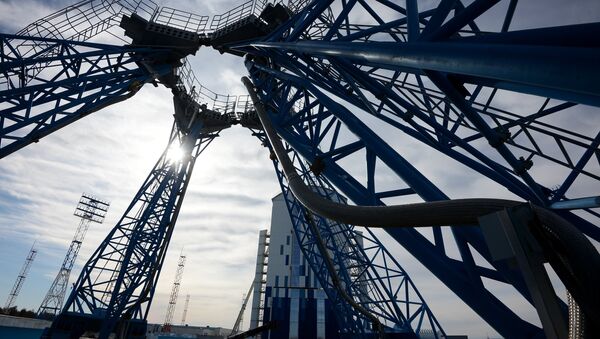"Scientists from the Samara State Aerospace University will launch an integrated research project on near-Earth space and the way it impacts materials used in spacecraft," the statement reads.
The project will be carried out using an Aist 2D satellite developed by the Samara State Aerospace University in cooperation with TsSKB-Progress. It is expected to take part in the first launch from the Vostochny Space Launch Center.
Research on Near-Earth Space
The Aist 2D satellite is equipped with scientific equipment for studying the parameters of the spacecraft's external environment (gases), as well as external factors influencing the materials used in the spacecraft, its hardware and the progress and results of various technical experiments that take place on spacecraft.
The equipment package, developed and manufactured by the Institute of Space Device Engineering of the Samara State Aerospace University, consists of three devices: a mass-spectrometer monitor, a solar wind sensor and a gamma counter.
"First, we'll see gas escaping the satellite, since its structures contain a good deal of organic materials, including resin and a laminate fabric base. In two to three weeks the satellite will be almost free of any gas, which will enable us to assess the levels of atomic oxygen, the strongest oxidant. In three to four months we will begin measuring the impact of solar activity and radiation," Igor Piyakov, Senior Research Fellow at the Institute of Space Device Engineering, said, as quoted in the press release.
The research will cover the four main positions of the satellite in its orbit: facing the sun, when the device's temperature is at its highest, on the shade side, when the temperature is at its lowest, and during sunrise and sundown.
Reducing the Cost of Space Materials
Research projects of this kind are aimed at substantially reducing the cost of developing and testing new materials used in spacecraft. The Institute of Space Device Engineering is building its second laboratory simulator for modeling the space environment (a vacuum chamber with a particle accelerator) which will allow for accelerating particles to 15 kilometers per second, among other things.





